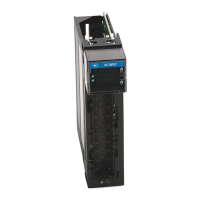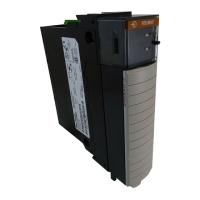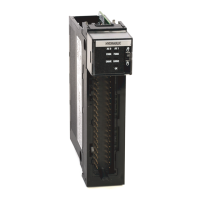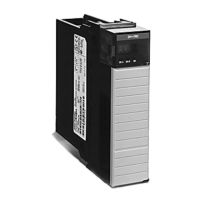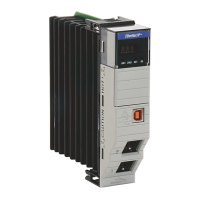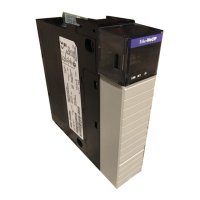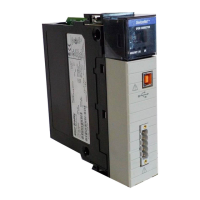Rockwell Automation Publication 1756-UM058G-EN-P - November 2012 33
Digital I/O Operation in the ControlLogix System Chapter 2
Worst Case RPI Multicast Scenario
In the worst case scenario, the owner-controller sends the output data just after
the reserved network slot has passed. In this case, the output module does not
receive data until the next available network slot.
Remote Output Modules Connected via the EtherNet/IP Network
When remote digital output modules are connected to the owner-controller via
an EtherNet/IP network, the controller sends output data at these times:
• When the RPI timer expires
• When an Immediate Output (IOT) instruction, if programmed, is
executed
An IOT sends data immediately and resets the RPI timer.
• When a new schedule is created for a 1756-OB16IEFS module from the
motion planner for a cam that has been armed by an MAOC instruction
Because the 1756-OB16IEFS module is the only 1756 module that can be
used in a remote chassis with the MAOC instruction, it is the only module
that receives output data in this scenario
.
These best and worst case scenarios indicate the time required for output data
to transfer from the owner-controller to the module once the owner-controller
has produced it. They do not take into account the user program time in the
owner-controller.
The receipt of new data is a function of the length of the user program and its
asynchronous relationship with the RPI.
The owner-controller updates remote output modules at the end of each task
as well as at the RPI, as described earlier in this section, if your application uses
these components:
• 1756-CNB/D or 1756-CNBR/D modules
• RSLogix 5000 software, version 8.02.00 or later

